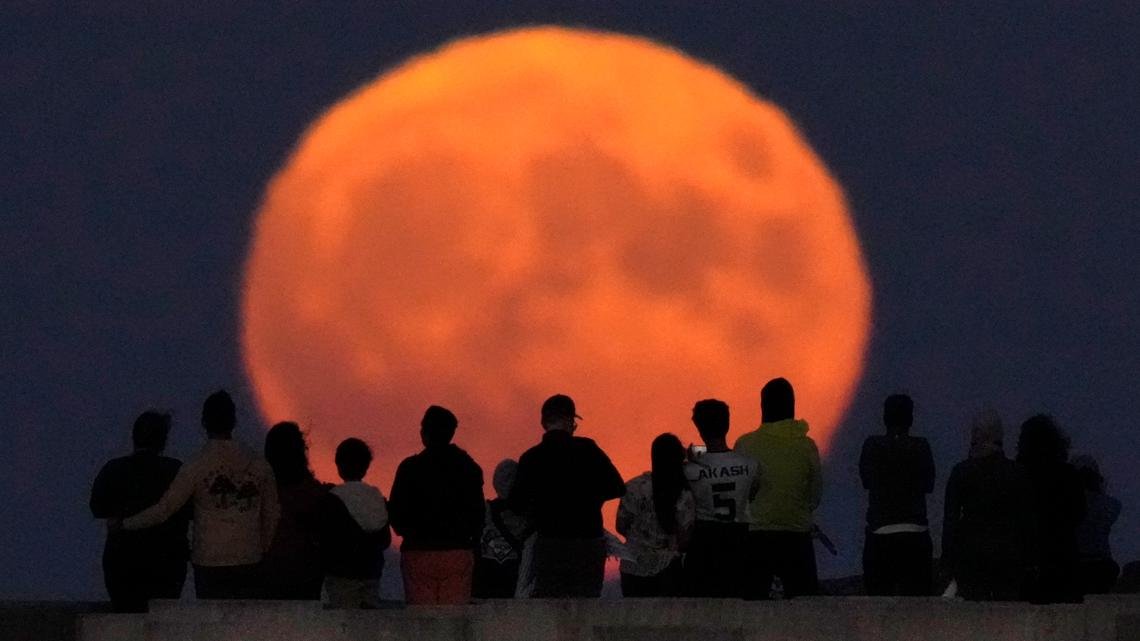aerospace
Mark Your Calendar: A Rare ‘Blue’ Supermoon Set to Dazzle Soon!

A supermoon, a phenomenon that occurs when a full moon coincides with its closest approach to Earth, is set to enchant stargazers this week. The first of four supermoons this year will rise on Monday, offering a spectacular sight as the lunar body appears larger and brighter than usual.
Noah Petro, project scientist for NASA’s Lunar Reconnaissance Orbiter, encourages individuals to observe the supermoon. “It serves as a great excuse to start looking at the moon more regularly,” he noted, highlighting its accessibility to casual observers.
Following August’s appearance, September’s supermoon will align with a partial lunar eclipse, while October’s will mark the moon’s closest approach of the year. The series will culminate with November’s supermoon.
While the term “supermoon” lacks a formal scientific definition, it signifies a full moon that occurs during a particularly close orbit to Earth. This event typically transpires three or four times annually due to the moon’s elliptical orbit.
Although a supermoon may not be noticeably larger, its enhanced brightness can be striking. “Unless you have looked at a lot of full moons or compare them in images, it is hard to notice the difference,” Petro advised, emphasizing the value of comparison.
The upcoming full moon will occur on August 19 at 2:26 PM Eastern Time, but it will appear full for about three days, from Sunday morning through early Wednesday morning. This month’s supermoon, known as the Blue Moon or Sturgeon Moon, varies by region, also referred to as the Red, Corn, Green Corn, Barley, Herb, Grain, or Dog Moon.
Distance plays a factor in this astronomical event. The first supermoon will be 224,917 miles (361,970 kilometers) away. The subsequent one, on September 17, will be nearly 3,000 miles (4,484 kilometers) closer, coinciding with a noticeable partial lunar eclipse visible across much of the Americas, Europe, and Africa.
October’s supermoon is anticipated to be the closest at 222,055 miles (357,364 kilometers) while November’s will measure 224,853 miles (361,867 kilometers) away from Earth.
While the visual differences may be subtle, a supermoon can shine up to 30% brighter than average. Increased interest in lunar exploration, including future missions under NASA’s Artemis program, adds to the allure of observing these celestial events.
Petro expressed excitement about the renewed focus on lunar missions, remarking, “It certainly makes it more fun to stare at.” With advances in exploration technology, the moon invites observers to share in its celestial beauty.


















